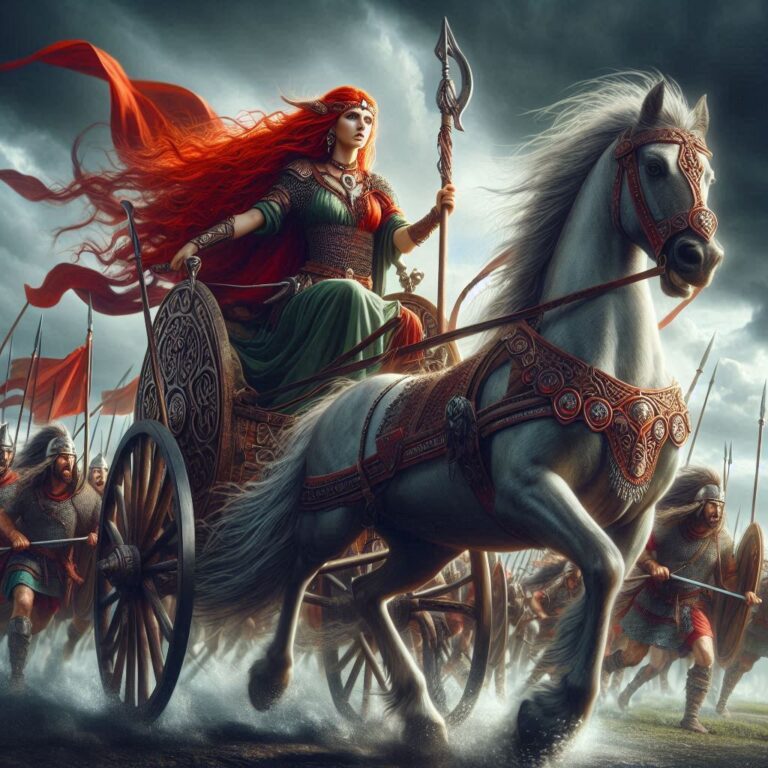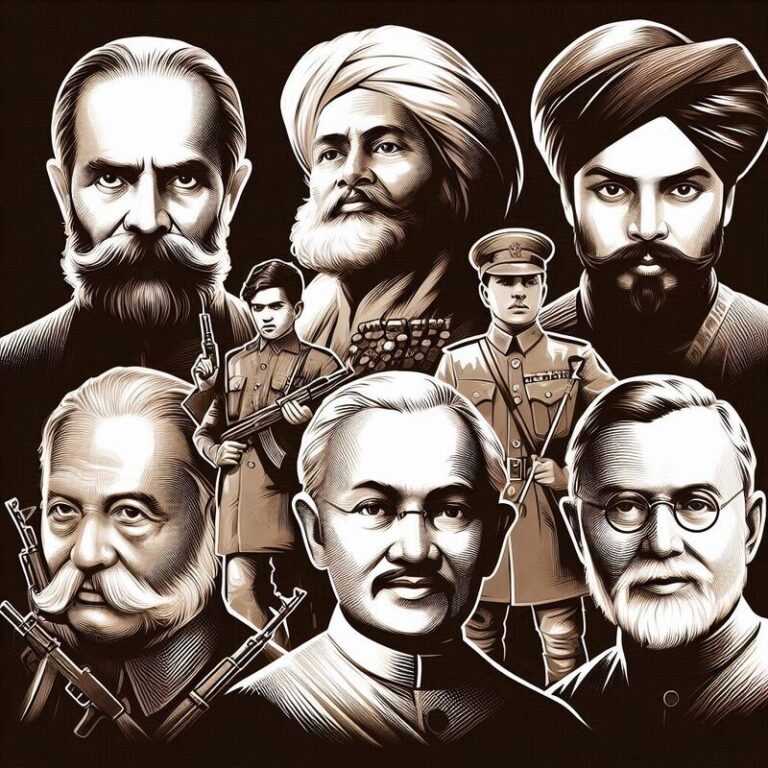Joan of Arc
Joan of Arc
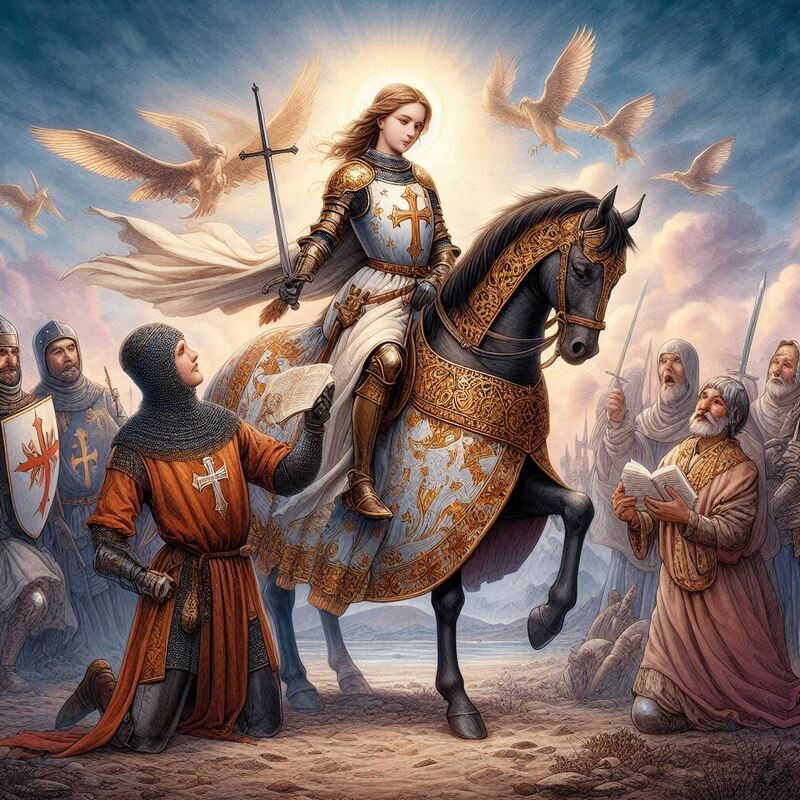
Joan of Arc: Saint, Warrior, Legend
Joan of Arc, also known as the Maid of Orléans, stands as one of history’s most enigmatic and inspiring figures. Her life story, filled with visions, military triumphs, and martyrdom, has transcended centuries to become a symbol of faith, courage, and national pride. From her humble beginnings in the rural village of Domrémy to her canonization as a saint, Joan’s journey is a testament to the power of conviction and the impact of one individual on the course of history.
Early Life and Divine Calling
Joan of Arc was born around 1412 in Domrémy, a small village in the northeast of France. She was the daughter of Jacques d’Arc and Isabelle Romée, peasant farmers who lived a simple life. From an early age, Joan exhibited a deep piety and devotion to the Catholic faith, often spending hours in prayer and attending Mass.
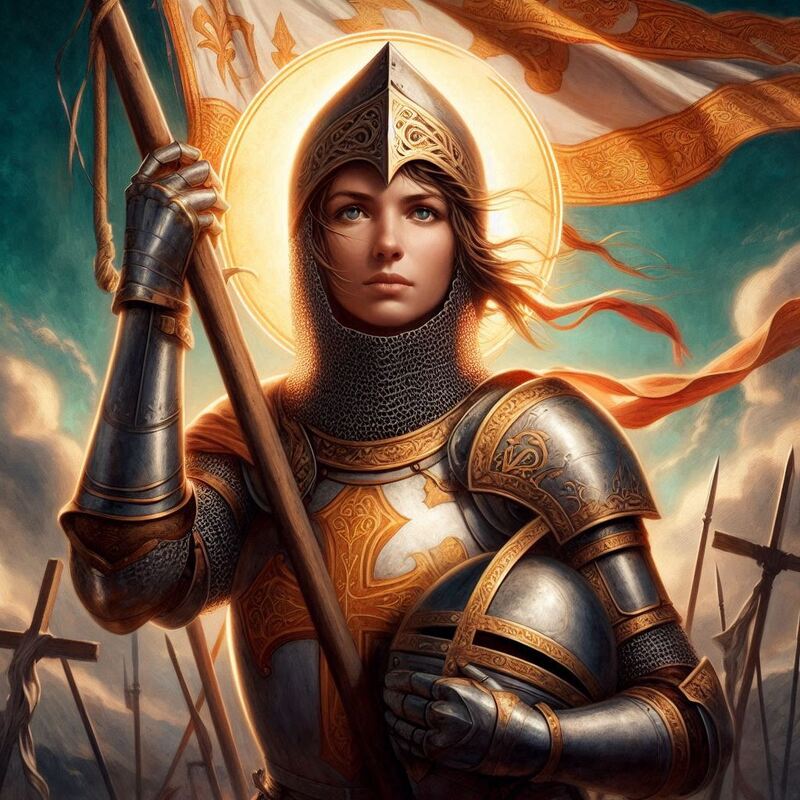
At the age of 13, Joan began experiencing visions and hearing voices, which she later identified as those of Saint Michael, Saint Catherine, and Saint Margaret. These voices, she claimed, instructed her to support Charles VII and help expel the English from French territory. Despite her young age and lack of formal education, Joan’s unwavering belief in her divine mission set her on a path that would alter the course of French history.
The Path to War
In 1428, Joan made the bold decision to leave her home and seek an audience with Charles VII, the Dauphin of France. After overcoming numerous obstacles, including skepticism and ridicule from local authorities, Joan finally met with Charles at the court in Chinon in 1429. During this meeting, Joan’s conviction and sincerity impressed Charles and his advisors. After a series of examinations by theologians, who declared her free from demonic influence, Joan was granted permission to accompany the French army to Orléans.

Joan’s presence at Orléans marked a turning point in the Hundred Years’ War. Clad in white armor and carrying a banner bearing the names of Jesus and Mary, Joan inspired the French troops with her unyielding faith and determination. Her leadership and strategic acumen played a crucial role in lifting the siege of Orléans, a pivotal victory that bolstered French morale and turned the tide of the war in favor of the French.
Military Campaigns and Victories
Following the success at Orléans, Joan continued to lead French forces in a series of military campaigns. Her involvement in the Battle of Patay in June 1429 resulted in a decisive victory over the English, further solidifying her reputation as a formidable military leader. Joan’s strategic insight and ability to inspire her troops led to several more victories, culminating in the coronation of Charles VII at Reims on July 17, 1429. This event, orchestrated and supported by Joan, was a significant symbolic triumph, affirming Charles’ legitimacy as the rightful king of France.
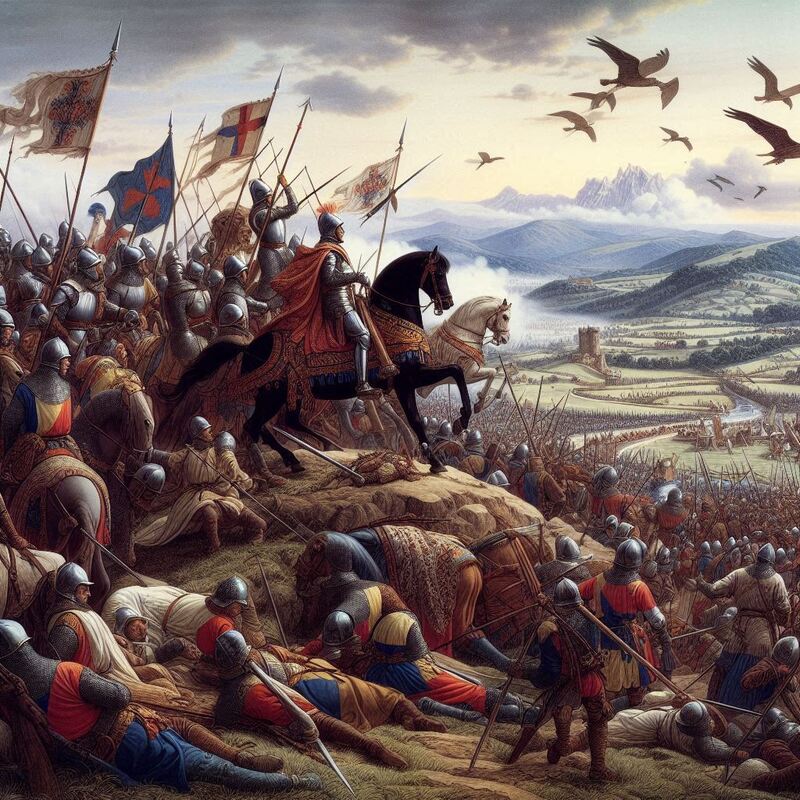
Despite her military successes, Joan’s influence began to wane as political and military challenges persisted. In May 1430, while defending the town of Compiègne, Joan was captured by Burgundian forces allied with the English. Her capture marked the beginning of her tragic downfall.
Trial and Martyrdom
Joan was handed over to the English and subsequently put on trial for charges including heresy, witchcraft, and cross-dressing (the latter because she wore male military attire). The trial, conducted by an ecclesiastical court in Rouen, was a politically motivated spectacle aimed at discrediting Joan and undermining the legitimacy of Charles VII.

Throughout the trial, Joan remained steadfast and composed, eloquently defending her actions and asserting the divine origin of her mission. Despite her resilience, the court found her guilty, and on May 30, 1431, Joan of Arc was burned at the stake in the marketplace of Rouen. Her execution was intended to silence her influence, but instead, it solidified her legacy as a martyr and a symbol of French resistance and faith.
Canonization and Legacy
In the years following her death, Joan of Arc’s reputation underwent a profound transformation. In 1456, a posthumous retrial ordered by Charles VII cleared her of all charges, declaring her a martyr who had been wrongfully condemned. Over the centuries, Joan’s story continued to inspire countless individuals, and her legacy grew in both religious and secular contexts.
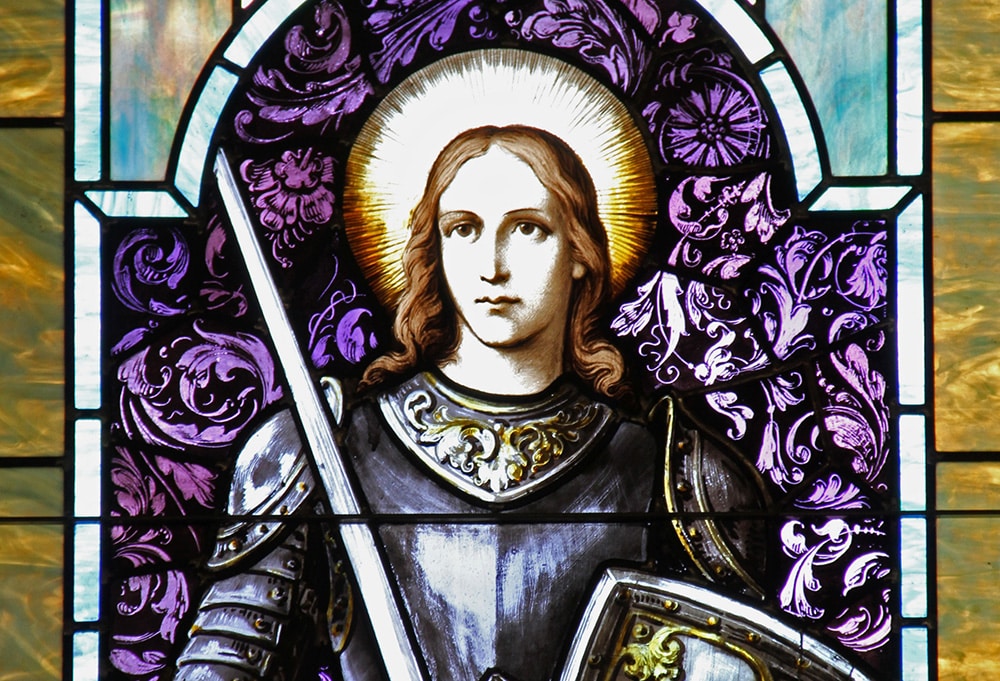
In 1909, Joan was beatified by Pope Pius X, and in 1920, she was canonized as a saint by the Roman Catholic Church. Today, she is recognized as the patron saint of France and soldiers. Joan’s life has been the subject of numerous works of literature, art, and film, each interpreting her story through various cultural and historical lenses.
Symbol of Faith and National Identity
Joan of Arc’s enduring legacy can be attributed to the profound symbolism she embodies. Her unwavering faith, courage in the face of insurmountable odds, and ultimate sacrifice resonate deeply with themes of righteousness and divine justice. For the French, Joan represents the spirit of national identity and resistance against foreign oppression. Her story is often invoked during times of national crisis and renewal, serving as a reminder of the strength and resilience of the human spirit.
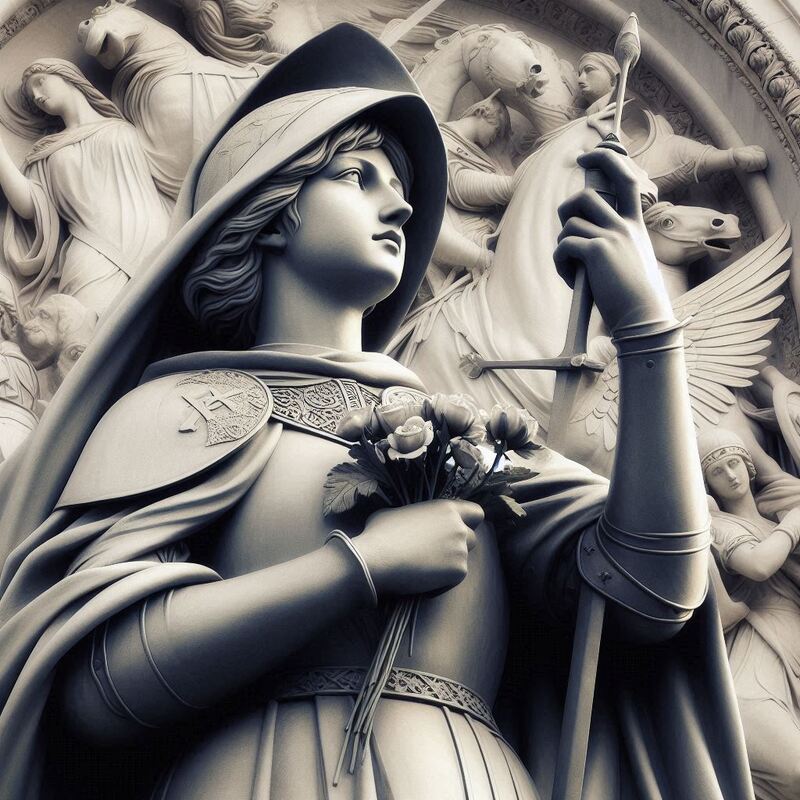
In addition to her religious and national significance, Joan of Arc’s life challenges traditional gender roles and expectations. Her role as a female military leader in a male-dominated society continues to inspire discussions on gender equality and the power of individual agency.
Conclusion
Joan of Arc’s journey from a humble peasant girl to a canonized saint and national hero is a testament to the enduring power of conviction and faith. Her life story, filled with visions, military triumphs, and martyrdom, transcends the boundaries of history and myth, offering a timeless narrative of courage, sacrifice, and inspiration. Joan of Arc remains a beacon of hope and resilience, her legacy illuminating the path for generations to come.

